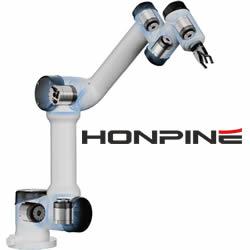RE2 Robotics to Develop Manipulator Arms for Unmanned Underwater Vehicles
RE2s DMEA technology will provide EOD personnel with the ability to remotely and effectively address Waterborne Improvised Explosive Devices (WIEDs).
PITTSBURGH, PA - August 18, 2015 - RE2, Inc., a leading developer of mobile manipulation systems, announced today that the company was awarded a $2.7 Million contract by the Office of Naval Research to develop an Underwater Dexterous Manipulation System for Explosive Ordnance Disposal (EOD) Applications (DMEA). RE2s DMEA technology will provide EOD personnel with the ability to remotely and effectively address Waterborne Improvised Explosive Devices (WIEDs).
"We are honored that ONR chose RE2 to develop a strong, highly dexterous underwater manipulation system," stated Jorgen Pedersen, president and CEO of RE2. "We thrive on complex engineering challenges and are excited to leverage our mobile manipulation expertise for the underwater systems market."
WIEDs pose a significant threat to our vessels, bridges, and ports. WIEDs placed in congested areas, such as bridge pilings, are particularly difficult to access and defeat. RE2s dual-arm dexterous manipulation technology integrated onto an Unmanned Underwater Vehicle (UUV) will make it possible to perform EOD tasks in confined spaces.
Pedersen continued, "We are working with several unmanned underwater systems subject matter experts, including Bluefin Robotics, The Pennsylvania State University Applied Research Lab, SPAWAR Systems Center Pacific, and Dr. Hagen Schempf, to ensure the success of the technology and program."
Featured Product

